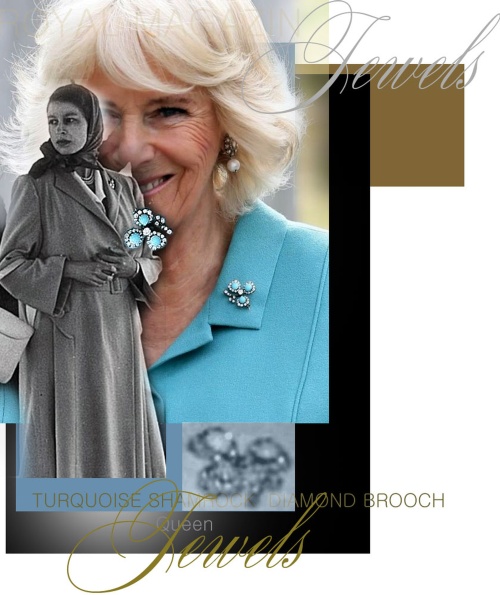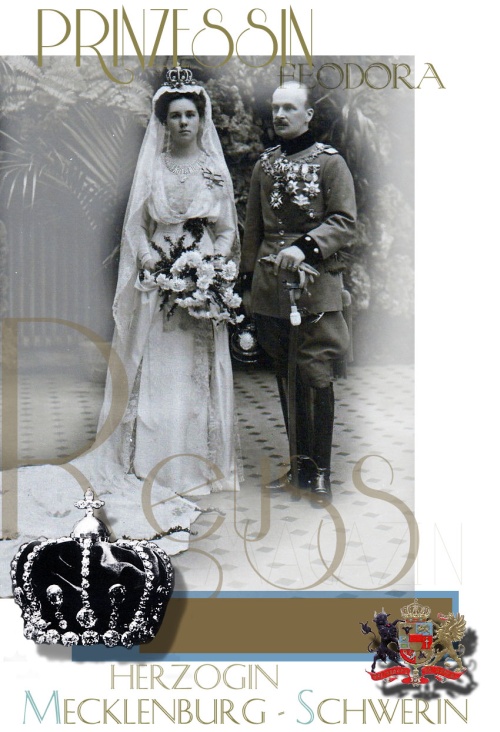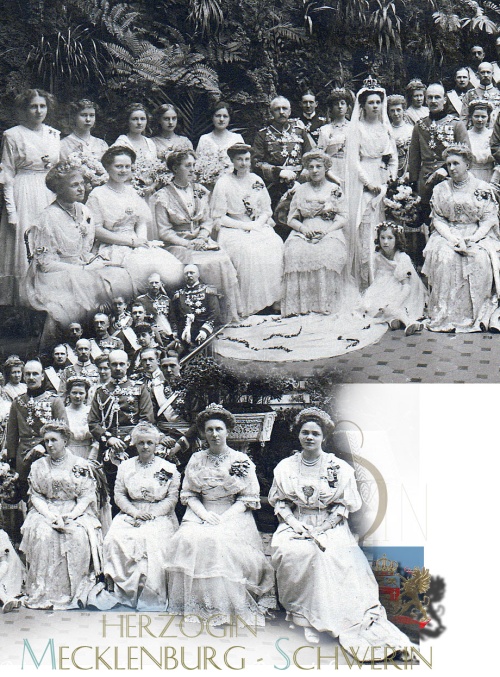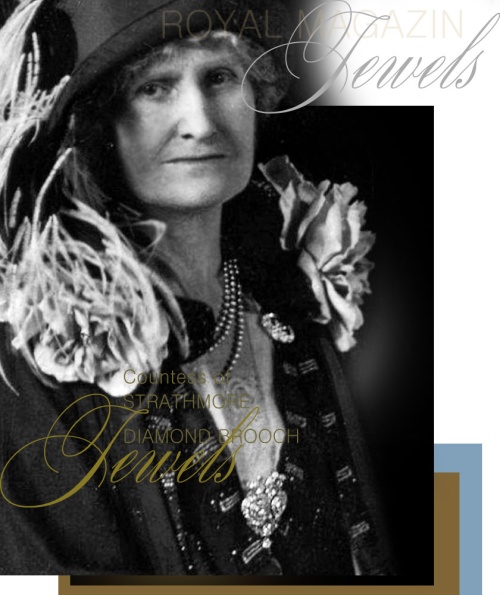
Queen Elisabeth II Turquoise and Diamond Shamrock Brooch | Wedding Gift from the Dowager Duchess of Portland | Queen’s Brooches

Noble Jewels | Royal Jewellery | Imperial tsar Jewel historic history Royal Jewellery & Aristocratic Jewels Jewelry Aristokratie Adel Aristokraten heritage diamonds enlish aristocracy, aristocracy tiara diamondtiara Diadem Diademe princelyfamily princelyhouse almanach de gotha royal royals royalty realeza european royalty nobility noblesse nobleza nobiltà realeza Nobility
German nobility, Russian nobility, Hungarian nobility, Spanish nobility, Italian nobility, british nobility, swedish nobility, french nobility, Austrian nobility, Adelshaus, ancient nobility ,old nobility,




Wedding diamonds from Count Glamis, later Count of Strathmore and Kinghorne, to Cecilia Cavendish-Bentinck- two inwinded hearts in diamonds with a crown as pendant, large brooch, worn on the wedding of the Duke and Duchess of York in 1923 Countess Strathmore Diamond Jewels Marriage Bridal Jewels Wedding Gift in 1881 |


Duchess of Albany Wedding | Heirloom Jewels Fürstin Helene zu Waldeck-Pyrmont, Princess of Nassau
Wedding Jewels | Princess Helen of Waldeck -Pyrmont Duchess of Albany | Hochzeits-Schmuck
Princess Helen’s Snake Bracelet | Prinzessin Helene’s Schlangenarmband aus Brillanten
The Wedding gifts of Duchess Helen | Die Hochzeitsgeschenke der Herzogin Helen Albany in engl.
Princess Waldeck -Pyrmonts Portrait a gift of the Queen | Geschenkeliste zur Vermählung in Deutsch
Wedding presents, Bracelets for Helen Princess of Waldeck-Pyrmont | Schmuck -Armbänder zur Hochzeit
Once formed over 150 kilometers deep within the Earth’s mantle, diamonds now glitter on many a ring finger. A recent study sheds light on how these precious gems made their way to the surface. Through geological clues and model simulations, researchers revealed how the breakup of tectonic plates led to volcanic eruptions that brought these „treasure-rich“ materials within our reach.

Diamonds are made of ordinary carbon, but what sets them apart from materials like coal is their purity and consistency. Naturally, their highly compact crystal structure can only form under immense pressure and heat in the Earth’s mantle, conditions found at depths over 150 kilometers. Over millions of years, diamonds were „baked“ in this extreme environment. The process of how they reached the Earth’s surface was roughly understood: diamond-bearing rocks melted due to geological processes, rose through fissures, and eventually surfaced during volcanic eruptions. The remains of these cooled volcanoes formed the deposits where raw diamonds are found today, typically embedded in a material known as kimberlite, named after the South African diamond-rich location, Kimberley. However, previous models couldn’t fully explain the origin of kimberlite melts deep within the Earth. It was evident that these processes were somehow linked to the restructuring of the Earth’s tectonic plates.
Unraveling the Mobilization Process
To investigate the geological processes leading to mobilization and kimberlite eruptions, the team led by Thomas Gernon from the University of Southampton delved into the matter. „The pattern of diamond eruptions is cyclic and follows the rhythm of supercontinents forming and breaking apart over hundreds of millions of years. However, until now, we didn’t know the process that suddenly brings diamonds to the Earth’s surface after resting 150 kilometers deep for millions or billions of years,“ says Gernon.
To gather new insights, the researchers analyzed the global correlation between the occurrence of kimberlites and the history of tectonic plate movements on Earth. They combined radiometric dating results with tectonic reconstructions, revealing that kimberlites formed over the past billion years typically erupted about 30 million years after the breakup of continental plates in the corresponding regions. This suggested an association with specific processes occurring at rift zones.

Hot Processes at Plate Boundaries
To shed light on the exact mechanisms, the team developed geological model simulations that provided a plausible picture of the processes. According to their explanation, a continental plate thins considerably over many millions of years before it breaks apart. This process, known as „rifting,“ causes the Earth’s surface to sink, eventually forming a rift valley. This is currently happening in East Africa, where the Rift Valley is forming. The model suggests that something similar occurs deep within the Earth: pieces of the underside of the plate sink into the mantle while hotter rock flows in from below to fill the void—similar to seawater on the surface. This incoming magma destabilizes the surrounding rock containing diamonds, turning the previously ductile material into a liquid that then rises upward. Eventually, through volcanic eruptions, it reaches the surface and solidifies into diamond-rich kimberlite.
Furthermore, the researchers can explain why volcanic eruptions with diamond-rich kimberlite can occur relatively far from the continental edges. These eruptions are also ultimately caused by plate breakup. Dynamic processes that extend far and wide occur during this process. „These flows along the underside of tectonic plates remove a considerable amount of rock, dozens of kilometers thick. This chain reaction ultimately reaches regions of the continents that are far from rift zones,“ explains co-author Sascha Brune from the German Research Centre for Geosciences (GFZ) in Potsdam.


The Van Cleef & Arpels ruby and diamond ‚Jarretière‘ bracelet holds a fascinating story, making it one of the most important jewels of all time. This exceptional piece of jewellery stars in Anne Eisenhower’s remarkable collection, all exuding the timeless elegance of old Hollywood glamour.
Marlene Dietrich, renowned for her distinctive voice and trailblazing style, epitomized the essence of Hollywood stardom. A German-American actress, she soared to fame during the transition from silent films to talkies, captivating audiences with her magnetic presence. In the 1930s, Dietrich worked under contract with Paramount Pictures, collaborating frequently with Austrian-American director Josef von Sternberg on notable films like „The Blue Angel“ (1930) and „Blonde Venus“ (1932).
As Dietrich’s fame grew, she expanded her repertoire, collaborating with other legendary directors, including the esteemed Alfred Hitchcock. Dietrich’s Van Cleef & Arpels ruby and diamond ‚Jarretière‘ bracelet, a prominent piece worn by the actress during the filming of „Stage Fright,“ the 1950 thriller directed by Hitchcock. This bracelet has become the star lot in the Magnificent Jewels of Anne Eisenhower .
Prior to entering the collection of the late philanthropist, interior designer, and granddaughter of Dwight D. Eisenhower, the bracelet held a special place in Marlene Dietrich’s heart, both on and off the silver screen. It was the bracelet as one of the most recognizable pieces of Van Cleef & Arpels ever produced, attesting to its iconic status.
Beyond their shared glamour and magnetism, both Anne Eisenhower and Dietrich possessed a strong sense of patriotism. While Anne’s grandfather led the Allied Forces in liberating Nazi-occupied Europe during World War II, Dietrich became a dedicated advocate for the US war effort. After renouncing her German citizenship and becoming a US citizen in the late 1930s, Dietrich utilized her position in the spotlight to sell war bonds during World War II and volunteer at the Hollywood canteen, a popular gathering place for off-duty soldiers, alongside other Hollywood luminaries. She also embarked on two USO tours in 1944 and 1945, entertaining troops in France, Italy, Algeria, and Germany. In recognition of her contributions, she received the Medal of Freedom from the US government and the Legion of Honour from the French government in 1947.
Marlene Dietrich resumed her work on screen and stage in the late 1940s and early 1950s, featuring in notable films such as Billy Wilder’s „A Foreign Affair“ and Hitchcock’s „Stage Fright.“ During this time, she formed enduring relationships with renowned fashion and jewelry houses, including Christian Dior, Cartier, and Van Cleef & Arpels. Dietrich’s close friendship with Louis Arpels, a member of the Van Cleef & Arpels family, led to the creation of one of the most extraordinary pieces of jewelry ever made: her ruby and diamond bracelet.
Crafted in 1937 by Van Cleef & Arpels‘ expert jewellers, the cuff bracelet features oval-shaped rubies, round, square-shaped, and baguette-cut diamonds, all meticulously set in platinum. Notably, the bracelet graced several scenes in Hitchcock’s „Stage Fright,“ as Dietrich’s character,
The VCA ruby and diamond cuff bracelet will be offered by Christie’s New York in June 7th.
Princess Margaret of Connaught | Crown Princess of Sweden Wedding Present – Turquoise cluster and Diamond brooch, Turquoise pendant – Royal Jewel history

An oval turquoise and diamond cluster brooch and drop shape pendant, and turquoise and diamond cluster earrings once belonged to Empress Catherine II of Russia, also known as Catherine the Great, and inherited through Princess Louise Margaret of Prussia, the Duchess of Connaught, Crown Princess Margareta of Sweden and Queen Ingrid left to Queen Margarete of Denmark. She presented it to her daughter-in-law, crown princess Mary, on their 50th birthday.
History of The Bessborough Diamond Tiara
The platinum tiara was given from Vere Brabazon Ponsonby, 9th Earl of Bessborough 1880-1956 to his wife, Roberte Countess of Bessborough née Poupart de Neuflize (1892 – 1979) and was also a present from his colleagues from De Beers. The marquise-shaped diamond was offered to the Earl, in 1931, as a gift by the De Beers diamond company, when he left his position of director.


Sold at Christies Auction Magnificent Jewels Geneva May 17th 2023 945 000 CHF
Countess Bessborough Diamond Tiara Chaumet Diadem | England British Aristocratic Noble Jewel History
Roxburghe Tiara | Fleur de Lys Roxburghe Tiara| Duchess of Roxburghe Tiara

Ein Beitrag geteilt von Christie’s Jewellery (@christiesjewels)
Roxburghe Tiara | Mary Duchess of Roxburghe | Fleur de Lys Diamond Tiara | Wedding Gift